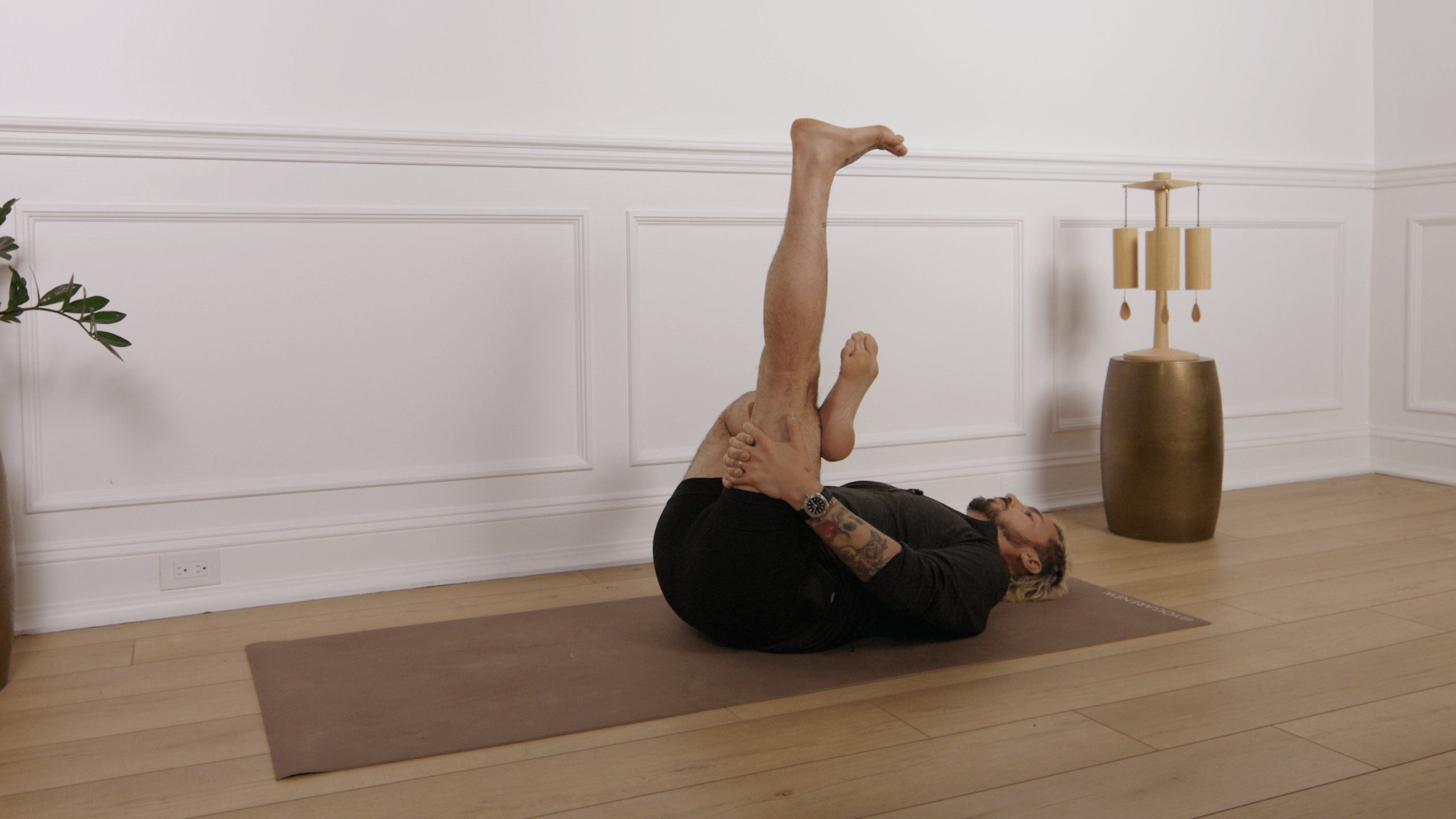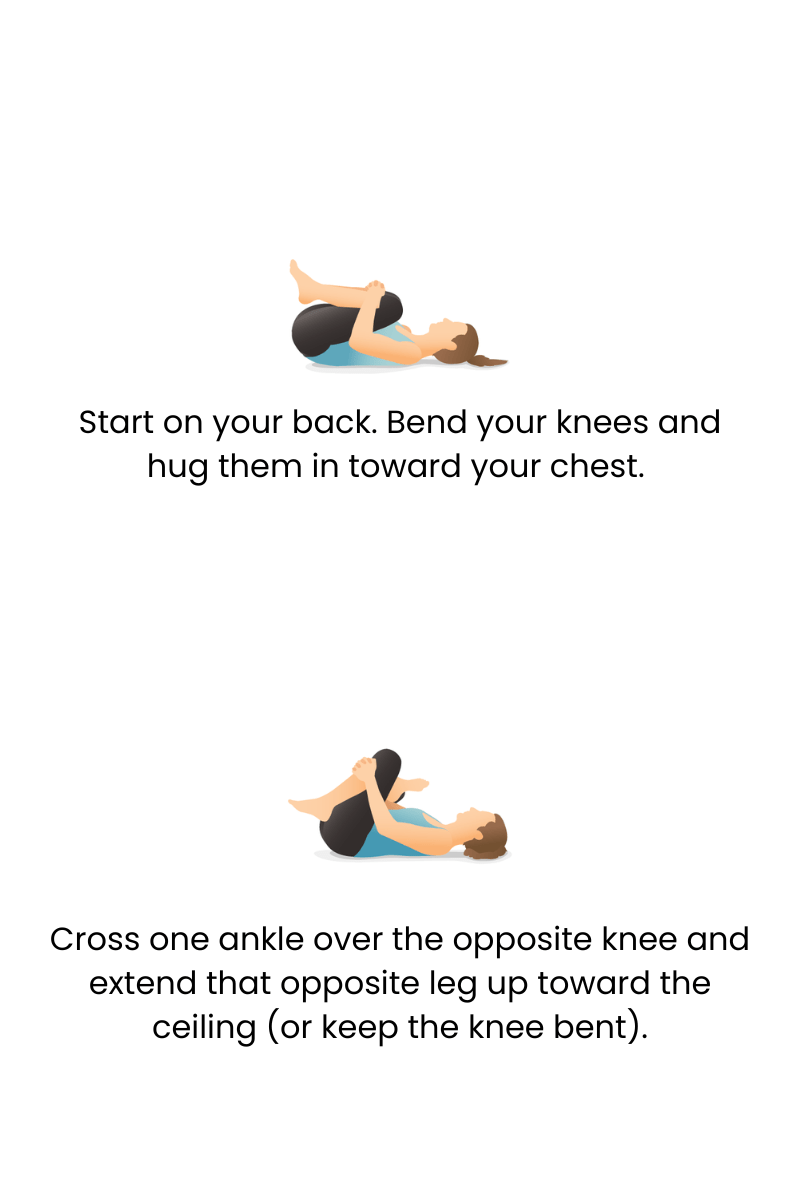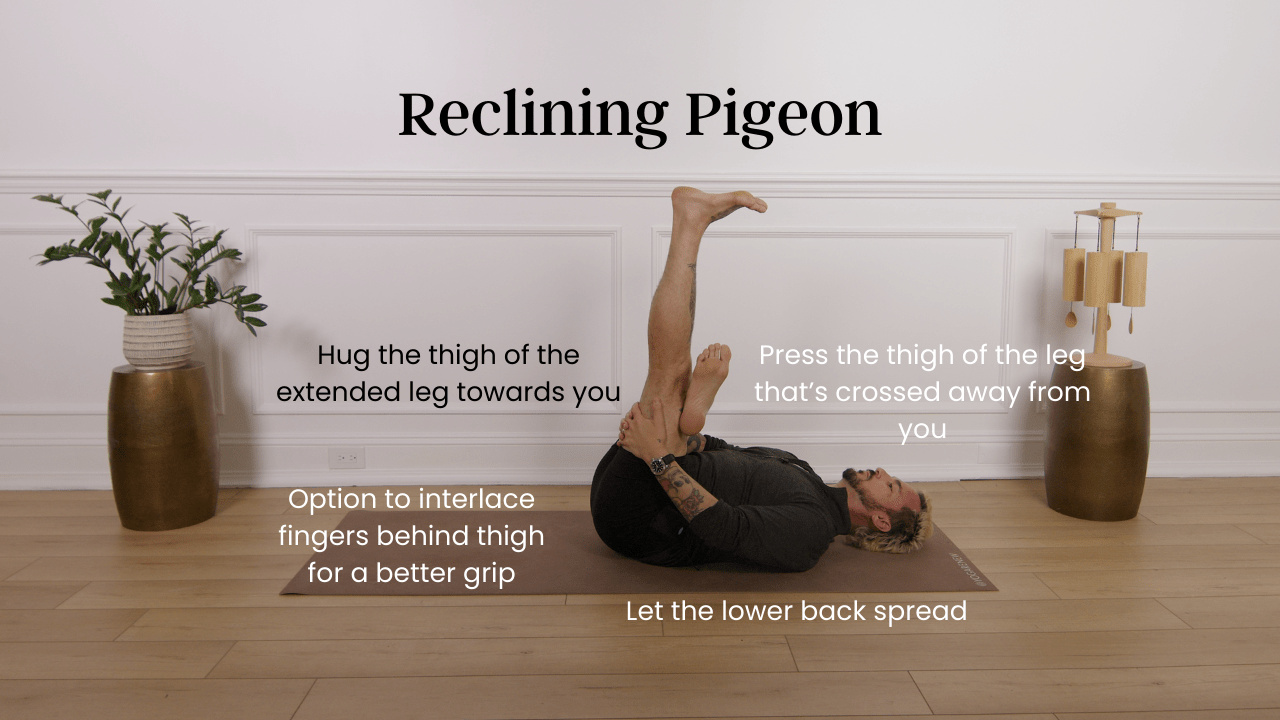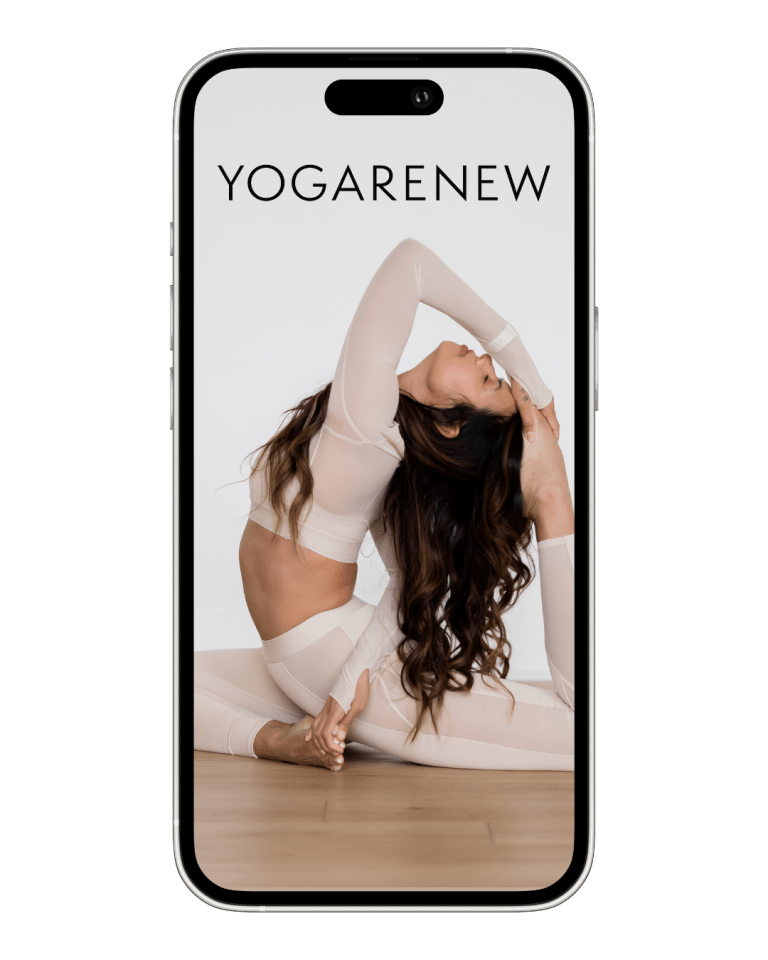What is Reclining Pigeon?
English Name: Reclining Pigeon Pose
Sanskrit Name: Supta Kapotasana (pronounced SOOP-tah kah-poh-TAHS-uh-nuh)
Category: Foundational, Hip Opener, Gentle, Beginner to Intermediate

English Name: Reclining Pigeon Pose
Sanskrit Name: Supta Kapotasana (pronounced SOOP-tah kah-poh-TAHS-uh-nuh)
Category: Foundational, Hip Opener, Gentle, Beginner to Intermediate
Reclining Pigeon Pose, or Supta Kapotasana, is a gentle hip-opening stretch performed lying on your back, often known as Figure Four Pose. It targets the hips, glutes, and lower back while allowing the spine to remain neutral. This pose promotes hip flexibility, eases lower back tension, and soothes the nervous system.
Widely practiced in restorative, therapeutic, and beginner yoga, Reclining Pigeon is an excellent alternative to the traditional Pigeon Pose for those with knee or back sensitivity. Its supportive nature makes it ideal for deep relaxation or as preparation for deeper hip openers.


Reclining Pigeon Pose is a soothing, accessible way to open the hips and release the lower back without pressure on the knees or spine. It provides all the benefits of a hip opener while being easy to modify for any body. Whether you’re winding down from an intense practice or just need a moment to stretch and reset, this pose offers calm, balance, and deep physical release.
Yes! It’s ideal for gently opening tight hips. Use a strap or keep the bottom foot on the floor if needed.
It can help in some cases, especially if done gently. But if it aggravates sciatic pain, skip it or consult a professional.
Draw the thigh closer to the chest or gently press the top knee away—only if it feels good.
Reclining Pigeon is done on your back and places less pressure on the joints, making it more accessible for most bodies.
Absolutely. Use props like a block or bolster, and hold the pose for 1–3 minutes with soft breathing.

Explore classes & pose tutorials for any style, format, duration or experience level with a free account in the YogaRenew app. Or subscribe and gain access to workshops, live classes and more.